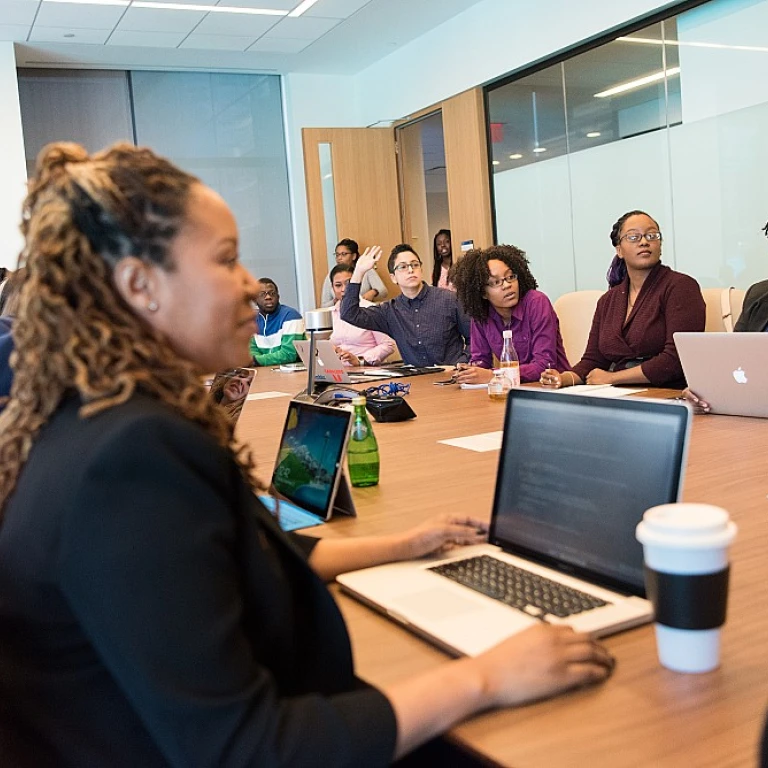
Understanding Employee Engagement
Grasping the Value in Employee Engagement
Understanding what employee engagement truly means is foundational to fostering a thriving workplace. At its core, it's about employees feeling committed to their work and connected to the company. When employees experience high levels of engagement, they are more likely to exceed expectations, stay loyal, and contribute to a positive team environment. Engagement is not a mere buzzword—it's directly linked to a company's success and productivity. Engaged employees are not just satisfied but are motivated by their work tasks, the organizational culture, and the shared goals of their team. They take initiative and bring creative ideas to the table. Team building and workplace synergy play crucial roles in cultivating engagement. Activities that encourage employees to share their thoughts and provide feedback create an atmosphere where voices are heard and valued. This ultimately leads to increased job satisfaction and a positive work life balance. In today's work environment, especially with the rise of remote employees, creating a sense of belonging without physical presence is more important than ever. Engagement activities that are both fun and impactful can be a low-cost way to foster this sense of team spirit and purpose. Moreover, intertwining engagement strategies with themes from inspiring sources can serve to further uplift workplace morale. For those looking for a creative inject, exploring inspiring quotes to boost colleague engagement may provide additional motivation and ideas to keep your workforce energized and connected.Leveraging Technology for Engagement
Embracing Technology to Strengthen Engagement
In today's digitally connected world, leveraging technology is indispensable in creating an engaging work environment. By integrating innovative digital tools, companies can not only engage employees more effectively but also make the process more efficient and enjoyable, even on a low-cost budget. One of the most impactful ways technology can enhance employee engagement is through the use of collaborative platforms. These tools empower team members to share ideas, feedback and collaborate seamlessly, regardless of whether they are in the same office or working from different parts of the globe. Tools like Slack, Microsoft Teams, and Asana help to create a workplace culture where every employee feels valued and heard, fostering a sense of belonging and commitment. To further enrich the work life of your team, consider incorporating virtual engagement activities. Virtual team building exercises, like online escape rooms or virtual coffee breaks, offer inexpensive employee engagement ideas that can be easily coordinated and shared across departments. These activities not only break the monotony of the work day but also enhance camaraderie among remote employees. Moreover, technology can be pivotal in recognizing employee achievements. Deploying platforms that automate and streamline recognition programs can help ensure that achievements do not go unnoticed. Recognizing successes promptly and publicly can significantly boost morale, encouraging employees to continue delivering high performance. Implementing a variety of digital feedback mechanisms is paramount for companies looking to cultivate a culture of continuous improvement and development. Feedback initiatives that are tech-enabled afford employees the opportunity to provide input regularly, enhancing transparency and aiding in the formulation of strategies that resonate with all team members. Finally, the integration of AI-driven analytics into the workplace can provide invaluable insights into employee engagement trends. These insights can be instrumental in understanding areas for improvement and tailoring future engagement strategies more effectively. For further reading on creating a vibrant and engaged workforce, explore these insights and motivational quotes that inspire and elevate team spirit.Creative Recognition Programs
Innovative Ways to Recognize Achievements
Creating creative recognition programs can be a game-changer in boosting employee engagement and fostering a positive workplace culture. Recognizing the hard work and achievements of your team is not only cost-effective but also essential in making employees feel valued. Here are some low-cost yet effective strategies to implement:- Personalized Messages: A simple yet powerful way to recognize team members is through personalized messages. Whether it's a handwritten note or a virtual message, taking the time to acknowledge an employee's accomplishments can significantly enhance morale and job satisfaction.
- Peer Recognition: Encouraging employees to recognize each other's efforts fosters a supportive environment. Implementing a peer recognition platform where employees can publicly share appreciation can help build a sense of community.
- Spot Awards: Offer small but meaningful awards for outstanding performance. It could be a free lunch, a gift card, or even a custom-made company merchandise item. Ensure these awards are given in a timely manner to maximize their impact.
- Recognition Boards: Create a visual display, either virtual or physical, where employee achievements are highlighted. This not only celebrates success but also inspires other team members.
- Work Anniversary Celebrations: Celebrate milestones such as work anniversaries. Acknowledging an employee's dedication and contributions over time helps in strengthening their connection with the company.
Fostering a Culture of Feedback
Creating a Feedback-Friendly Environment
In today's dynamic work environment, fostering a culture of feedback is essential to boost employee engagement. When employees feel their voices are heard, they are more likely to be engaged and committed to their work. Encouraging open communication can help employees feel valued and respected, which in turn enhances job satisfaction.
To create a feedback-friendly culture, companies can implement several low-cost strategies. Start by establishing regular check-ins where team members can share their thoughts and ideas. These sessions should be informal and focused on creating a safe space for employees to express themselves. This approach not only helps in identifying areas for improvement but also strengthens the bond between team members and management.
Implementing Feedback Tools
Leveraging technology can significantly enhance the feedback process. There are numerous inexpensive employee engagement tools available that facilitate real-time feedback. These tools allow employees to share their insights and suggestions instantly, making it easier for managers to address concerns promptly. By integrating such tools, companies can ensure that feedback is not only collected but also acted upon, leading to a more engaged workforce.
Moreover, feedback tools can be used to conduct anonymous surveys, which encourage employees to be more honest and open about their experiences. This can provide valuable insights into the company culture and highlight areas that need attention. Engaged employees are more likely to contribute positively to the workplace, and feedback tools can play a crucial role in achieving this.
Encouraging a Two-Way Dialogue
Feedback should not be a one-way street. Encouraging a two-way dialogue between employees and management is crucial for building trust and transparency. Managers should not only seek feedback from their teams but also provide constructive feedback to help employees grow and develop. This reciprocal approach can lead to a more cohesive team and a positive work environment.
To further enhance this culture, companies can organize engagement activities such as feedback workshops or team-building exercises. These activities can be both fun and informative, helping employees to feel more connected to their peers and the company. By investing in such initiatives, companies can create a supportive atmosphere where feedback is seen as an opportunity for growth rather than criticism.
Encouraging Professional Development
Investing in Growth Opportunities
One of the most impactful ways to boost engagement is by encouraging professional development. When employees feel like they are growing and advancing in their careers, they are more likely to be engaged and satisfied with their work life. This doesn't necessarily mean you have to invest in expensive training programs. There are plenty of low-cost and effective strategies to foster a growth-oriented work environment.
Here are a few ideas to consider:
- Online Courses and Webinars: Many platforms offer affordable or even free courses that employees can take at their own pace. This flexibility can be especially beneficial for remote employees who need to balance professional development with other commitments.
- Mentorship Programs: Pairing team members with mentors can create a mutually beneficial relationship that encourages learning and guidance. This not only builds skills but also strengthens company culture and community.
- Lunch and Learn Sessions: Organize informal sessions where employees can share knowledge on specific topics. This can be a fun engagement activity that promotes team building while allowing employees to showcase their expertise.
- Book Clubs: Encourage team members to read a book related to their field and discuss it together. This can be a relaxed way to generate new ideas and inspire employees to think differently.
Providing these opportunities allows employees to take charge of their own development, leading to increased job satisfaction and helping them feel more valued by the company. Engaged employees are essential for creating a vibrant and innovative workplace culture that benefits everyone.
Building Community Through Virtual Events
Fostering Strong Connections in the Virtual Work Environment
Building a sense of community can be especially challenging when employees are working remotely. However, with creativity and the right engagement strategies, companies can help employees feel valued and part of a cohesive team. Virtual events can serve as a low-cost but highly effective tool for strengthening connections among team members and enhancing company culture.
One idea is to organize virtual team building activities that encourage employees to have fun and share their thoughts in a relaxed setting. This could involve virtual escape rooms, online trivia games, or themed days where team members dress up and share photos. Such activities foster camaraderie and give everyone a chance to see other sides of their colleagues, beyond work-related interactions.
Encouraging employees to engage in day-to-day informal virtual hangouts can also be beneficial. For instance, virtual coffee breaks allow team members to chat about non-work-related topics, share ideas, and strengthen relationships. This informal space helps employees feel more connected and engaged with their peers, thereby improving overall job satisfaction.
Creating virtual workshops or webinars on subjects of interest can also help in building community. When employees feel they are gaining valuable insights or skills, they not only become more engaged but also take pride in being part of a forward-thinking workplace that invests in their growth. These events can include guest speakers or in-house experts who provide guidance and invite feedback, aligning with fostering a culture of growth and collaboration.
Remember, it’s essential to regularly seek feedback from participants to tailor future events to their preferences and needs. Ensuring that virtual activities align with the tastes and interests of the team members will help create a thriving remote workplace culture. In the end, engaged employees are more likely to contribute positively to the company and share a stronger sense of belonging.













